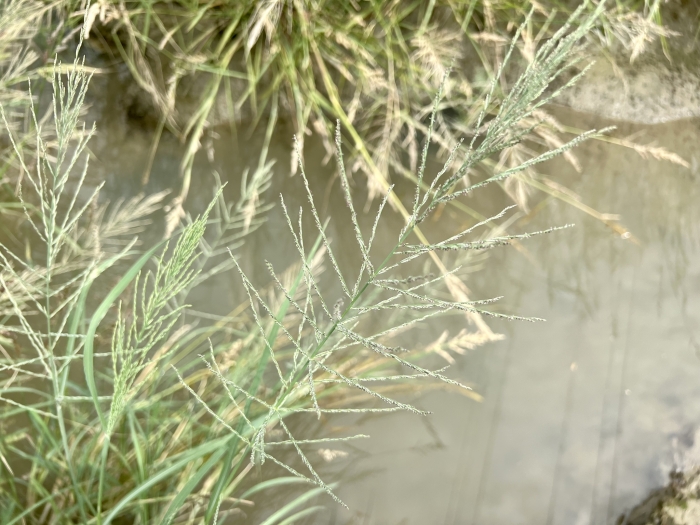Bearded Sprangletop
(Diplachne fusca)
Bearded Sprangletop (Diplachne fusca)
/
/

© nmoorhatch
CC BY 4.0
Image By:
© nmoorhatch
Recorded By:
Copyright:
CC BY 4.0
Copyright Notice:
Photo by: © nmoorhatch | License Type: CC BY 4.0 | License URL: http://creativecommons.org/licenses/by/4.0/ | Uploader: nmoorhatch | Publisher: iNaturalist |
























Estimated Native Range
Summary
Diplachne fusca, commonly known as Bearded Sprangletop, is a perennial grass that is native to a wide range of saline and brackish environments, including coastal salt marshes, inland salt flats, and disturbed areas with saline soils across North America, the Caribbean, South America, Africa, Asia, and Australia. It has been introduced to Europe, New Zealand, and Hawaii. Bearded Sprangletop typically grows to a height of 20-100 cm and forms dense tufts or clumps. Its inflorescences are open and airy, with spikelets that have a bearded appearance, giving the plant its common name. The flowering season varies depending on the region but generally occurs in the warmer months.
Bearded Sprangletop is valued for its ability to thrive in saline conditions where few other plants can survive, making it an important species for soil stabilization and habitat creation in coastal and saline environments. It is often used in restoration projects for salt marshes and can contribute to the overall health of these ecosystems. This grass prefers full sun to partial shade and can tolerate a range of soil types, provided they are saline and moist. It is relatively low-maintenance, requiring minimal care once established. However, it can become invasive outside its native range and should be managed to prevent it from outcompeting native species.CC BY-SA 4.0
Bearded Sprangletop is valued for its ability to thrive in saline conditions where few other plants can survive, making it an important species for soil stabilization and habitat creation in coastal and saline environments. It is often used in restoration projects for salt marshes and can contribute to the overall health of these ecosystems. This grass prefers full sun to partial shade and can tolerate a range of soil types, provided they are saline and moist. It is relatively low-maintenance, requiring minimal care once established. However, it can become invasive outside its native range and should be managed to prevent it from outcompeting native species.CC BY-SA 4.0
Plant Description
- Plant Type: Grass
- Height: 1.3-2.5 feet
- Width: 1-2 feet
- Growth Rate: Moderate, Rapid
- Flower Color: N/A
- Flowering Season: Summer
- Leaf Retention:
Growth Requirements
- Sun: Full Sun
- Water: Medium, High
- Drainage: Medium, Fast
Common Uses
Bank Stabilization, Erosion Control, Low Maintenance, Salt Tolerant
Natural Habitat
Native to coastal salt marshes, inland salt flats, and disturbed areas with saline soils across multiple continents
Other Names
Common Names: Saltmeadow Cordgrass, Alkali grass, Beetlegrass Sprangletop, Mexican Sprangletop, Saltgrass
Scientific Names: , Diplachne fusca, Bromus polystachios, Diplachne amboensis subsp. plurinodis, Diplachne aquatica, Diplachne aquatica, Diplachne fusca, Diplachne fusca, Diplachne fusca, Diplachne fusca subsp. alba
GBIF Accepted Name: